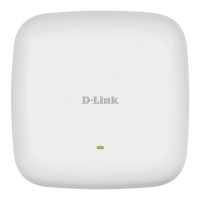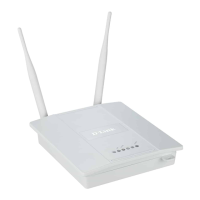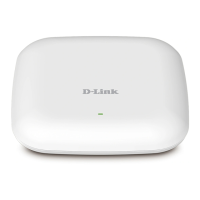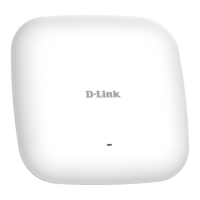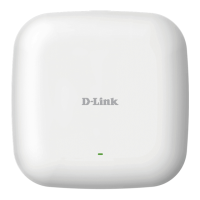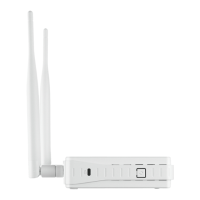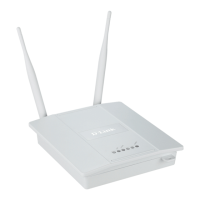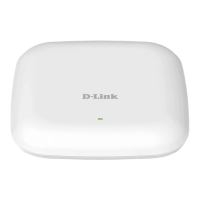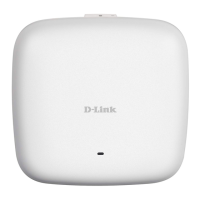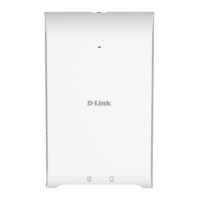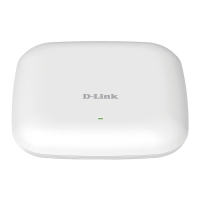
Do you have a question about the D-Link DAP-2230 and is the answer not in the manual?
| Frequency Band | 2.4 GHz |
|---|---|
| Maximum Data Rate | 300 Mbps |
| Wireless Standards | IEEE 802.11n |
| Ethernet Ports | 1 x 10/100 Ethernet |
| PoE Support | Yes (802.3af) |
| Operating Modes | Access Point, WDS, Client |
| Wireless Security | WEP, WPA/WPA2-Personal, WPA/WPA2-Enterprise |
| Power Supply | 12V DC or PoE |
Records the revision history of the manual, detailing changes made in different versions.
Lists the trademarks and company names referenced in the document.
Lists all items included in the product package, such as the access point and accessories.
Specifies the necessary hardware and software for operating the DAP-2230.
Provides an overview of the DAP-2230's purpose, capabilities, and key benefits.
Highlights the key functionalities and advantages of the DAP-2230.
Details the physical components, ports, and indicators of the access point.
Covers initial setup steps and safety precautions before installing the device.
Explains three methods for powering and connecting the access point to a network.
Provides instructions on securely mounting the access point to a wall or ceiling.
Offers guidelines for optimal wireless signal placement and performance.
Guides users on accessing and using the device's web interface for management and setup.
Details the process of saving and applying configuration changes made through the utility.
Covers essential wireless settings like SSID, band, channel, and visibility.
Explains the various security authentication methods supported by the device.
Configures the Local Area Network (LAN) IP settings for the device.
Details the configuration options for IPv6 network settings.
Covers advanced network and wireless configuration options for fine-tuning performance.
Sets up web-based authentication for guest access to the network.
Configures rules to allow or deny network access based on IP addresses.
Configures the device to act as a DHCP server for IP address assignment.
Configures Quality of Service rules to prioritize network traffic.
Displays current device status, firmware version, and MAC address.
Accesses system and network logs for monitoring and troubleshooting.
Provides access to various hidden administrator parameters and settings.
Manages administrator login credentials, including changing passwords.
Configures the Central WiFiManager for managing multiple APs.
Explains the Wired Equivalent Privacy security protocol and its limitations.
Guides on setting up WEP encryption for wireless security.
Explains the Wi-Fi Protected Access security standard and its improvements over WEP.
Guides on setting up WPA/WPA2 Personal security with passphrases.
Guides on setting up WPA/WPA2 Enterprise security using a RADIUS server.
Instructions for connecting to a wireless network using the Windows XP utility.
Steps to connect to a WPA-PSK secured wireless network.
Instructions for connecting to a wireless network using the Windows Vista utility.
Instructions for connecting to a wireless network using the Windows 7 utility.
Solves issues related to accessing the device's web interface and potential causes.
Provides steps to reset the device password if it is forgotten.
Addresses connectivity issues with specific sites or email services, suggesting MTU adjustments.
Explains fundamental concepts of wireless networking and Wi-Fi technology.
Explains the different modes of wireless network operation (Infrastructure, Ad-Hoc).
Guides on how to find the device's IP address on the network using ipconfig.
Details the process of manually assigning a static IP address to a device.
Lists the safety and emission certifications for the DAP-2230.
Displays radiation patterns for the device's antenna in different orientations.
Outlines FCC rules and guidelines for radio frequency interference.
Provides essential safety precautions for using the device.
Guides on environmentally responsible disposal and recycling of the product.
